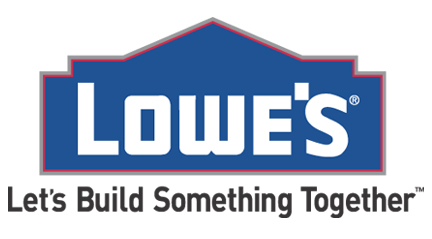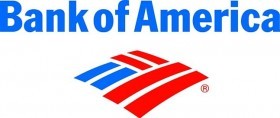When a business has confidence that it comprehends security risk—when it knows it’s basing it on a current and complete understanding of the threats that surround it—then it can feel good about its plan to protect people, property, and assets. But there is a valuable secondary benefit to being able to trust one’s risk assessment: substantial cost-savings.
Michael Fessler, Senior Director for Enterprise Security Services at American Red Cross, tells the story of an organizational facility in central Florida that unexpectedly got hit by an incident of crime, with thieves stealing catalytic converters off cars in the organization’s parking lot. It was troubling, certainly, but what response did it require?
Reflexively, site administration wondered if an immediate security upgrade was needed—perhaps it should hire additional patrols, invest in fencing, or purchase and deploy a host of new surveillance cameras. “When things like that happen, it’s natural for people to overreact,” said Fessler, who explained that they turned to CAP Index to put the events into perspective. “When you do a report, you can see that maybe it’s a one-off event.”
That’s exactly what the data showed in this case
Fessler explained to senior administrators at the facility that they were in a safe location and that nothing about that fact had substantively changed. “They were relieved to hear that, and it gave them confidence to go back to staff with [that message], which filtered down into the organization and restored staff’s feeling of safety.”
Credibility is key, said Fessler. Because CAP Index provides a reliable and robust picture of a community’s relative safety, it can confidently align protection. “It helps you not to overreact,” he said. “CAP Index is always where we start.”
‘Right-Sized’ Security
It’s often said that tight budgets are forcing security departments to ‘do more with less,’ but most teams have been trimming personnel and maximizing efficiencies for years, so that’s probably not realistic. It’s probably more accurate to say that security teams are being tasked to “do less with less—but smartly.”
This view is more honest, and acknowledges that companies can’t afford to protect everything, all the time, 100 percent. The goal is to give a little here and there in areas that will not materially harm the organization
It can be a tough call to make
Fessler explained that reliable, objective risk assessments help provide a roadmap to a right-sized security program. “You could spend thousands of dollars on cameras, but without being actively monitored, something like the theft of catalytic converters is not going to change,” he said. “When you look more realistically at situations, you can find that the answer sometimes is just to require managing people on site be more situationally aware.”
All Red Cross facilities have a base level of security, with data from CAP Index providing critical intelligence on when it makes sense, or not, to spend more on top of it. “At the base of our security pyramid are good policies and procedures and getting people to follow them, to wear badges, and to change that culture if that’s an issue.” Risk scoring data then informs the organization when and where additional protection spending is warranted.
Engaging Management
You can’t successfully operate a business without a sufficiently safe and secure environment. At the same time, every dollar allocated to protecting the company is a dollar that could otherwise be spent to advance the business.
This is the challenge that company executives face as they steer the company ship, trying to navigate close to the line that separates unnecessary spending on protection from the minimum required security spend—one that an organization cannot cross without assuming a level of security risk that it simply can’t live with.
IDENTIFY YOUR RISK SCORE DO MORE WITH YOUR SCORE
To meet the mandate, knowledge is power
Jay Beighley, CPP, Associate Vice President for Corporate Security at Nationwide Insurance, says management has a natural affinity for the scientific-based approach to security that CAP Index gives security teams. “Having a scientific method drive how money is spent is one of those things that management really responds to, that they can really understand.”
Beighley says CAP Index reports act as a critical communication tool, one that makes senior management aware of its risk appetite and does so with a fact-based approach to resource allocation that management appreciates.
It is increasingly apparent that security cannot just be about spotting vulnerabilities and plugging holes—there are simply too many holes to make this economically feasible. Thus, assessments play a particularly important role in shaping a security program, as it is these examinations of threats, vulnerability, and potential consequence—against the existence of critical assets—that inform an organization what amount of risk mitigation is warranted and what level of risk it makes sense to accept.
Optimize the Return on Security Investment
Basing a security operation on risk assessment is to acknowledge that a company contends with competing priorities and certain realities, and that not every security improvement can be enacted. Because CAP Index data is accurate, detailed, and frequently updated, both Beighley and Fessler believe it allows them to make appropriate, data-driven recommendations for security spending, and to clearly delineate for management when a ‘nice-to-have’ has become a security ‘must’—and it is this differentiation that a business requires for it to maximize security as cost-effectively as possible.
Provide your crime and loss data to see how CAP Index forecasting aligns with actual crime and loss incidents at your locations.

CAP Reports are critical to my risk assessments. They have enabled us to take a more surgical approach to investing in our stores that need it the most.
Brad Reeves
Senior Manager of Asset Protection
Five Below, Inc.

CAP Index is the first tool I turn to when time is of the essence. I can always depend on CAP Index to provide me qualified crime information within a very few minutes that I feel comfortable reviewing with the C-Suite.
Stephen A. Brown, CPP
Director, Corporate Security / Facility Security Officer
Burns & McDonnell

CAP Index data is a vital part of our security decision-making process.
Keith McGlen, CPP, CHPA
Associate Vice President
System Security Services
Memorial Hermann Health System

CRIMECAST® Reports have helped our organization for many years to proactively assess the particular risk for crime surrounding our facilities. The CAP Index® CRIMECSAST Platform is an easy-to-use online service that provides us with the flexibility to share and decentralize crime risk data within our North America business units.
Carlos J. Cortez,
Manager, Global Security Programs,
Kraft Foods, Inc. / Mondelez International

Our property selectors are not discouraged from a site just because it receives a high score. What we do is issue every store – all of them – a security classification. The classification determines how we allocate our security resources to that store.
Claude Verville,
Lowe’s

CAP Index's online platform, CRIMECAST, is great. It is easy to use and quick!
Ken Wieczorek,
Bank of America

In industries where there is high public contact and a customer is coming to our location (such as retail), why would you leave it to chance when planning security when there is an easy, affordable tool? When investing a million dollars on a location, what is this small charge compared to what it may cost you when you get sued?
Jay Beighley,
Nationwide Insurance

CAP Index assessments are a must for anyone engaged in asset protection. The new website is much improved and as important, easy to navigate.
Bruce List,
The Williams Companies

We have been using CAP Index for a few years and include it in our security vulnerability assessments. Highly recommend it.
Dan Yaross
Director, Protective Services
Nationwide Children's Hospital
 Sample CRIMECAST Reports
Sample CRIMECAST Reports